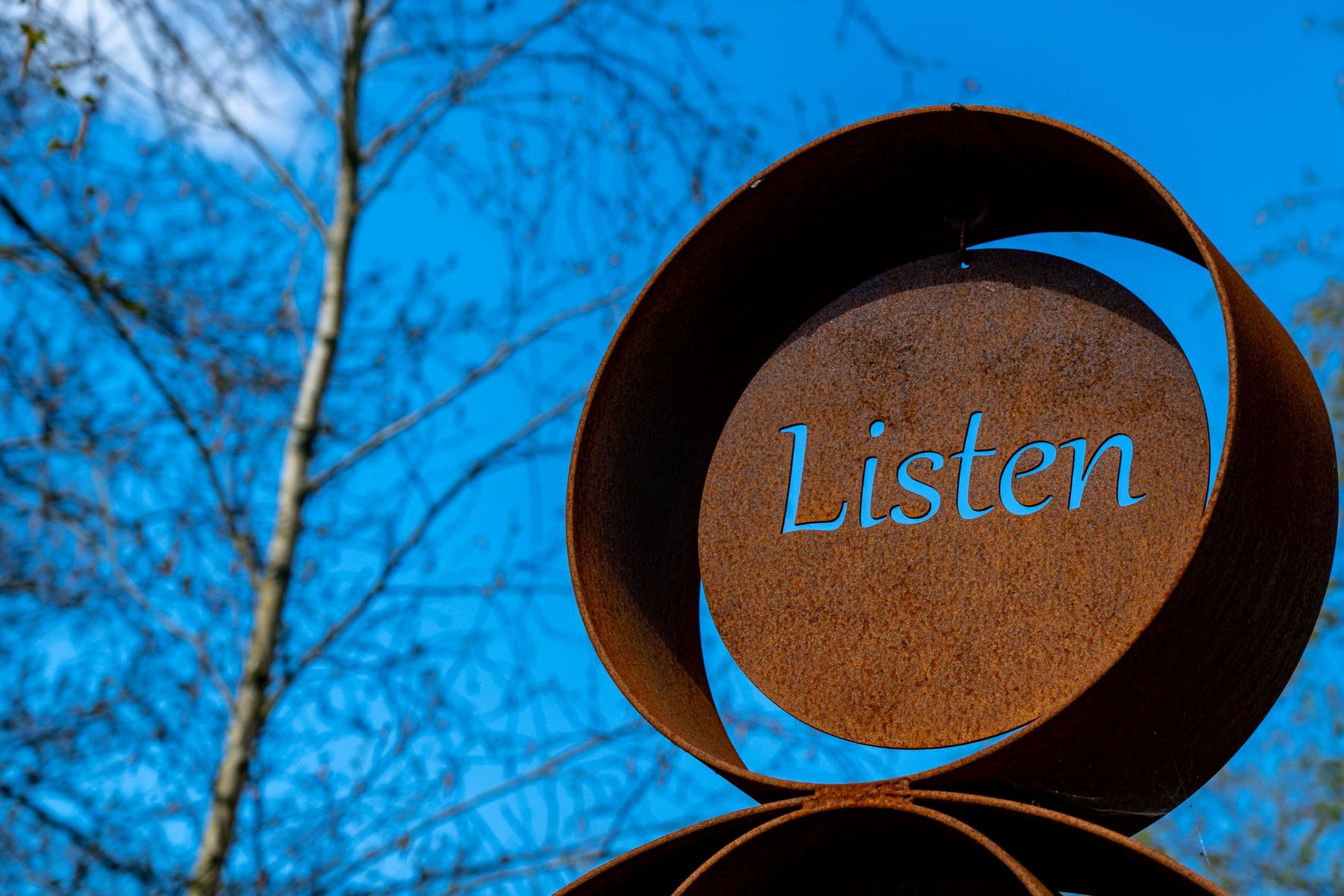St. Francis got it right. I want “to be understood, as to understand” and I bet you do too. But what does that mean and how do we get there?
Listen.
St. Francis of Assisi, then Stephen Covey
For all the Catholics reading this, you know The Prayer of St. Francis because you regularly sing it at Mass. Apparently, St. Francis didn’t write it, according to Wikipedia and other sources I researched, but the message doesn’t change. This Christian prayer of peace contains a line, quoted above, that Stephen Covey reinterpreted in a business context with his famous book, The 7 Habits of Highly Effective People.

Covey’s Habit #5: Seek First to Understand, Then to be Understood. He uses the phrase to define effective, empathic listening. From the perspective of Habit #5, Covey explains the action required as “reflecting feelings and words” then “stat[ing] your point of view using ‘I’ messages.”
The Lost Art of Listening
Listening is important. Yet in the “busy-ness” of life, listening often gets relegated to “What are the key points this person is making?” This transactional view of listening leads to these potential consequences:
- You may listen to reply, not to understand, and end up in reactive mode instead of responsive mode, which means replying without fully considering the topic at hand;
- Lacking full information because of glossing over the meaning or intent behind the words, you accept them at face value;
- Without paying attention to your five senses (because most communication is non-verbal), you lose the subtext of what the listener is saying.
Individually, nuance gets shunted aside when dealing with the sheer volume of data received daily. Societally, we are moving toward a literal, not figurative view, of the world.
Listening Builds Connection
Listening forms the basis of connection. As social beings, humans are wired to connect. Social media provides the digital platform to communicate and humans produce prodigiously based on the output seen on social media year over year.
It’s not enough.

Does social media nourish you? Most of the time, it feels like eating low-fat foods with fake sugar substitutes: I don’t feel satisfied and end up eating more to fill up than I would have had I just eaten the full-fat yogurt to begin with. Social media isn’t enough because I can’t connect directly with the speakers, content, or medium. Social media is the low-fat substitute that replaces full-fat human connection.
Connection happens by listening to understand instead of listening with half an ear while formulating your reply.
Effective Listening
Try these methods to listen more effectively.
- Start with the intent to understand what the other is saying. Ask for clarity when confused. There’s no shame in seeking clarity, and you will strengthen the social bonds between you and the person with whom you’re conversing.
- Practise focused, fact-based listening: Pay attention to what is said and implied through words, tone of voice, and body language. Use your five senses.
- Try intuitive, heart-based listening: Seek a gentler way where you respond to the emotion in any given moment, looking for the deeper meaning.

Listen Photo by Nick Fewings on Unsplash, Siblings Photo by Jess Zoerb on Unsplash, Yogurt Photo by Tiard Schulz on Unsplash, Connection Photo by Helena Lopes on Unsplash,

